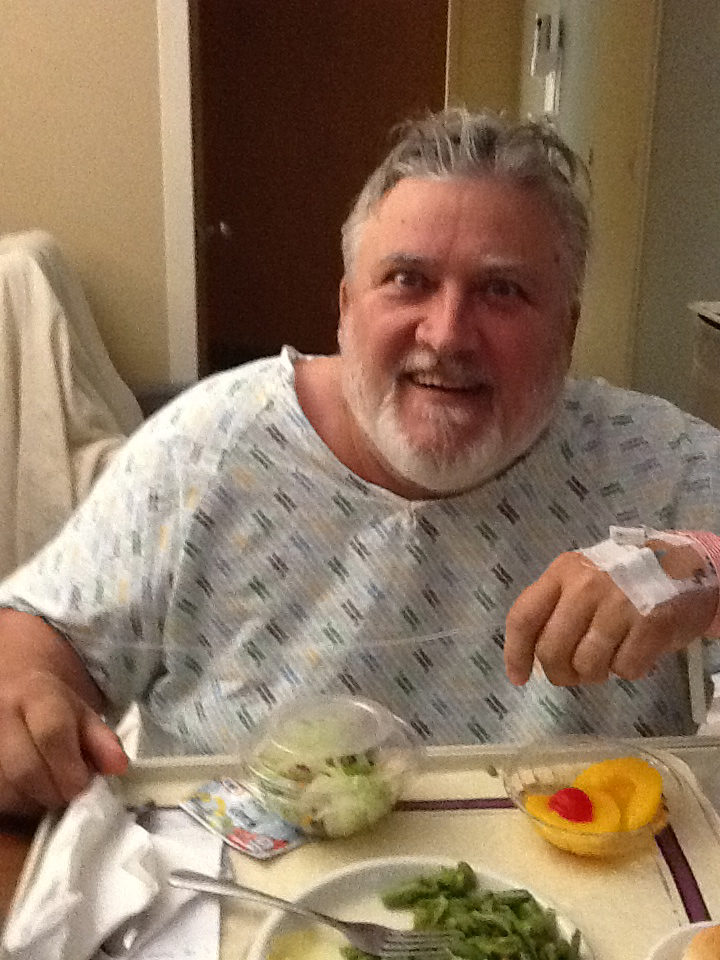As some of you know, before “Obama Care”, health insurance, I was one of the roughly 50 million Americans without health insurance. I got that way through a long path of being self-employed while having cancer twice. After monthly insurance payments reached $2000 and excluded cancer, I became what is commonly know in the trade as “self-insured”.
Right.
Until “Obama Care” I had to beg health providers for “discounts” off of their published “cash” prices. Prices that are most times 5 or 10 times higher than what insurance companies or medicare/medicaid pay for the same service. After all it is a capitalistic society and I am but one person competing against the thousands of customers the insurance companies represent.
A quick example: 17 years ago I fractured my femur head resulting in avascular necrosis, or bone death, of my left hip. My doctor told me I needed a total hip replacement that he would charge me $6,000.00 for. I gave him a down payment of $3000. I said “fine” and scheduled the procedure, taking all the classes and pre-op tests.
Finally the day before the surgery I was told to go to the hospital to sign some papers. The hospital person told me everything was ready and all they needed was a check from me for $30,000. I said that I needed to work out a payment plan to which she replied “we don’t do that kind of thing”. I canceled the procedure.
In the following 20 years since that date, I have lost the ability to perform my work properly, have been in constant daily pain, have gained 100 lbs and have been called a burden on society.
Believe me, I have had it relatively easy. I am still alive. Many, many people aren’t as lucky.
The system is broken and I hope to hell that the Obama plan can fix it, but I don’t see how. Can’t get blood out of a turnip.
Update: Flash forward to 2018. I was able to get an affordable insurance policy for my family that did not penalize me for preexisting conditions. Yes I even paid for it. After 2 hip replacements, a knee replacement, my gallbladder removed and 8 emergency kidney stone procedures (all life threatening), I am once again a fully functioning member of society. I do glow in the dark however, having had 42 CT scans to-date. But I am No longer a burden on society. I can work again.
Please read the article below to better understand just how screwed up the medical system still is. It does not fit in our system. – jughandle
Anatomy of the World’s Most Insane Health Care Billing System
By Morgan Housel
May 14, 2013
A few years ago, I went to the doctor for a simple procedure. I had high-deductible health insurance and would be paying for the procedure out of pocket.
Before heading in I asked the receptionist what I thought was a simple question: “How much is this going to cost?”
She had no idea. And she had no way to check. She looked at me like it was an unreasonable question. A manager contacted a third-party billing agency to get me a quote, which ended up being nothing close to what I actually paid in the end.
Economic models assume participants have perfect information. In reality, they often have no information whatsoever.
I thought this was a glaring example of how screwy health care pricing is. But I had no idea.
A permanent pacemaker implant at Pennsylvania’s Phoenixville Hospital is billed at $211,534. Four hours away at Unitown Hospital, the same procedure costs $19,747, or 91% less. 163 hospitals across the country charge at least $100,000 for a pacemaker, while 46 charge less than $30,000.
The official bill rate to treat chronic obstructive pulmonary disease, or COPD, at Bayonne Hospital Center in New Jersey is $99,690. At Lake Whitney Hospital in Texas, it’s $3,134, or 97% less. Thirty-five hospitals bill an average of more than $50,000 to treat COPD, while 161 bill less than $7,500.
A kidney and urinary tract infection faces a $132,569 bill at Crozer Chester Medical Center in Pennsylvania, but $6,224 at Wyoming County Community Hospital.
Those are just a few examples I pulled out of a massive database released by the Centers for Medicare and Medicaid Services last week. The group spilled the beans on what 3,000 hospitals charge for 100 of the most common medical procedures. It then compares those “chargemaster” prices to what Medicare actually paid for the treatments, based on hospital-specific estimates of the treatment’s cost, including administrative overhead.
The database — which contains nearly 1 million data points and crashed my computer three times — has two screaming-in-your-face takeaways.
The first is the difference between bill rates among hospitals. It’s just huge. At least a dozen treatments I looked up have a difference between the high-cost and low-cost provider of more than ten-fold, and several treatments will cost more than 20 times as much depending on what hospital you’re in.
The report doesn’t contain perhaps the most important metric — outcomes and quality of procedures performed. Teaching hospitals and hospitals that receive an influx of seriously ill patient transfers from other hospitals will also have higher-than-average costs.
But even looking at average prices by state shows massive discrepancies. In California, the average hospital charges $101,844 to treat respiratory infections. In Maryland, hospitals bill an average of $18,144, or 82% less, for respiratory infections. New Jersey hospitals bill an average for $72,084 for “simple pneumonia.” Massachusetts hospitals charge an average of $20,722 for the same condition.
The second takeaway is that the gap between what hospitals charge for procedures and what Medicare actually pays for those procedures is off the charts. Of the 100 procedures tracked in the database, the average difference between “average charges” and “average payments” is — I’m not making this up — 72%.
Go back to my pacemaker example above. Phoenixville Hospital may charge $211,534 for a pacemaker implant, but Medicare pays the hospital $17,835 for the procedure. Unitown Hospital bills $19,747 for the treatment, and is reimbursed $15,281. What starts out as a five-fold price discrepancy shrinks to a 14% difference in the end.
Steven Brill, a journalist who wrote an eye-opening cover story for TIME earlier this year exposing discrepancies in health-care bill prices that paved the way for the data’s release,wrote last week:
The hospital lobby, led by the American Hospital Association, is going to howl that publication of these “chargemaster” prices is unfair. Only a minority of patients are actually asked to pay those amounts, it will argue. Insurance companies, which cover the majority of patients, receive huge discounts off the list prices, though they pay substantially more than Medicare does.
True, but that doesn’t settle the matter. It actually highlights some of the deepest problems. Those “minority of patients” are no small group; they’re the estimated 48 million Americans without health insurance. For medical providers to say that “chargemaster” prices don’t reflect the true cost of care is to admit that some of the most financially vulnerable Americans may be being billed absurdly inflated prices. It’s ironic, but some of the greatest benefits to having health insurance isn’t necessarily the insurance coverage, but the price-negotiating power that insurance companies strike with care providers.
Imagine a banana in a supermarket. It costs $1 for those paying with Visa, $3 for those paying with MasterCard, and $32 for those paying with cash. You can’t sign up for Visa until you’re 65, and you can only get a MasterCard if you have a nice employer or a decent income. Worse, customers have no idea that such price discrepancy exists. They don’t even know how much they’ll pay for the banana until long after they’ve eaten it.
That would be absurd. No one would put up with it.
But it’s how our health care system works.
The health care industry is changing fast. If you want to learn more about the upcoming changes, check out our new special free report, “Everything You Need to Know About Obamacare.” Just click here to read more.


